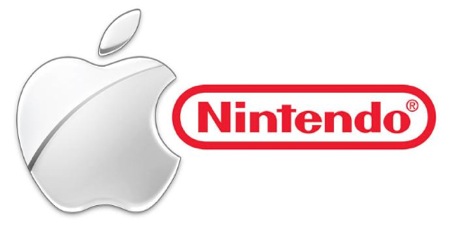
It's become increasingly apparent that Nintendo wants to replicate Apple's approach to product cycles. Both companies tweak a product slightly on a regular basis, sell it at a favorable profit margin (instead of at a loss), and start printing money — or at least that's the idea. That strategy has certainly been working well for Apple, and for the most part Nintendo has been successful, too.
That is, it was successful…until now.
The iPad 2 is a marginal improvement over the iPad. Yes, it's thinner and lighter, and it boasts two cameras, a bigger hard drive, and a faster processor. But other than that, it offers no major hardware revisions. The product launched earlier this year with much fanfare and has been selling like hotcakes ever since.
The 3DS is also an update to the already popular Nintendo DSi. It features a stereoscopic 3D display, a more powerful processor, and a series of much-needed software refinements. Unlike the iPad 2, however, the product launched earlier this year to the ambivalence of consumers, and it hasn't been selling too well. The press (and the general public by proxy) has since deemed the product a failure, to the point that Nintendo has announced a massive price cut not only for the 3DS, but also the salary of the company's president as well as the representative directors.
In order to provide some sort of perspective, the Nintendo 3DS did sell 4.3 million units globally in the past four months. By contrast, the original Nintendo DS sold 5.4 million units in the same length of time, but that was also over the holiday season. It's also worth noting that this isn't the first time Nintendo is slashing prices shortly after a product's launch. They did the same thing with the Nintendo 64, the GameCube, and yes, the Virtual Boy.
Both iPad 2 and the 3DS are updates to a previously successful device, but why did the outcome of these two devices vary so much? One of the signs points to the 3DS' hefty $250 price tag. Unlike the iPad 2, whose price remained the same as its predecessor's, the 3DS started off with a premium price tag of $250 — a sharp jump from the DSi's $170. The price hike implies that 3DS is a new device (even though it really, really isn't), and it exudes arrogance: You'll buy it no matter the cost.
Of course, the demographic for both companies is different as well. A $499 entry-level iPad is ultimately more affordable to a full-time working hipster living in San Francisco than it is for a typical middle-schooler who relies on his monthly allowance for a $250 Nintendo 3DS. Both companies have their own die-hard fanbase, but while Apple tends to create products that cater to its "I'm a Mac" demographic, Nintendo continuously ignores its fans with the hope of expanding its market share. As a result, the blue ocean has never been colder.
Then again, its not all a wash. This recent price cut may just be the alarm bell needed for Nintendo to stop with their stubbornness and finally get some work done. From what I've seen of the company's next-generation game console, the Wii U seems to be another "minor upgrade" product. (Yes, it's a major upgrade in terms of computing power, but it will be a generation behind in two years or less.) The single-touch, non-portable tablet controller and the limited Internet support aren't that impressive. The console could be so much more if Nintendo was willing to get aggressive with the product, instead of sugar coating their complacency with half-hearted "that's not what we're about" excuses.
Only so many comebacks are allowed before consumers give up. Apple turned itself around with the iMac and never looked back. Can Nintendo do the same?



